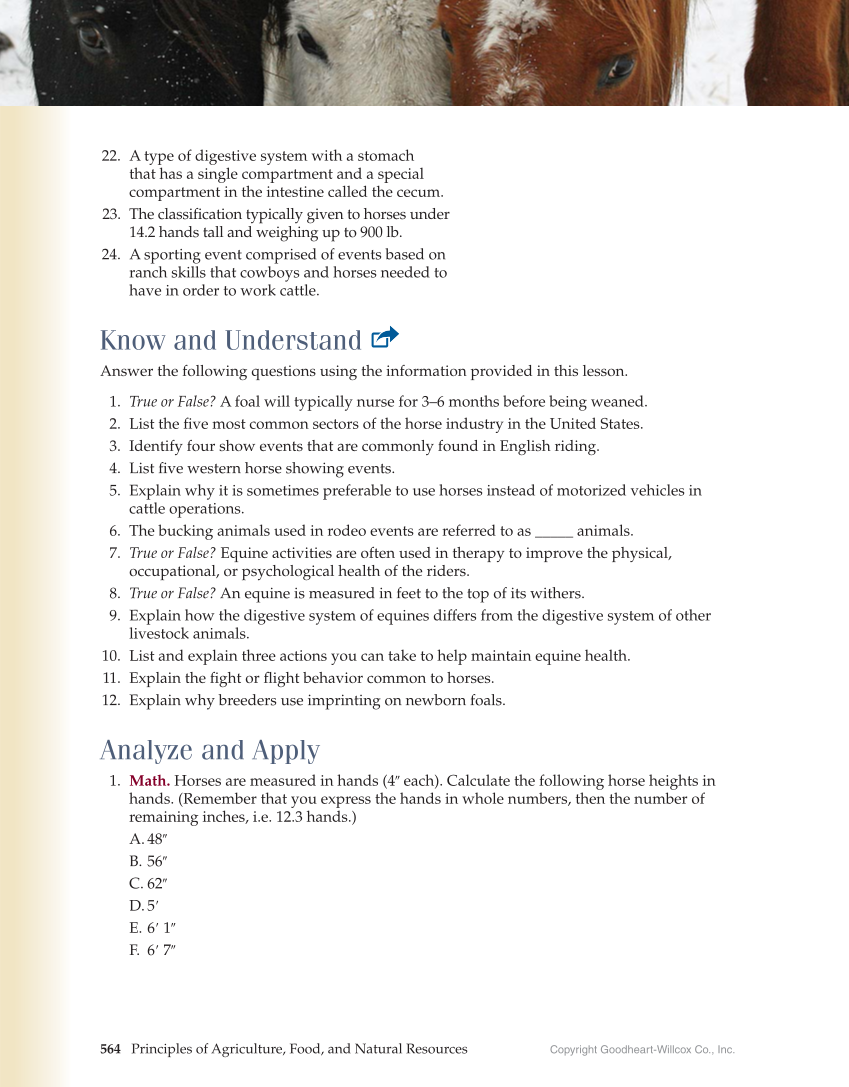Copyright Goodheart-Willcox Co., Inc. 564 Principles of Agriculture, Food, and Natural Resources 22. A type of digestive system with a stomach that has a single compartment and a special compartment in the intestine called the cecum. 23. The classification typically given to horses under 14.2 hands tall and weighing up to 900 lb. 24. A sporting event comprised of events based on ranch skills that cowboys and horses needed to have in order to work cattle. Know and Understand Answer the following questions using the information provided in this lesson. 1. True or False? A foal will typically nurse for 3–6 months before being weaned. 2. List the five most common sectors of the horse industry in the United States. 3. Identify four show events that are commonly found in English riding. 4. List five western horse showing events. 5. Explain why it is sometimes preferable to use horses instead of motorized vehicles in cattle operations. 6. The bucking animals used in rodeo events are referred to as _____ animals. 7. True or False? Equine activities are often used in therapy to improve the physical, occupational, or psychological health of the riders. 8. True or False? An equine is measured in feet to the top of its withers. 9. Explain how the digestive system of equines differs from the digestive system of other livestock animals. 10. List and explain three actions you can take to help maintain equine health. 11. Explain the fight or flight behavior common to horses. 12. Explain why breeders use imprinting on newborn foals. Analyze and Apply 1. Math. Horses are measured in hands (4″ each). Calculate the following horse heights in hands. (Remember that you express the hands in whole numbers, then the number of remaining inches, i.e. 12.3 hands.) A. 48″ B. 56″ C. 62″ D. 5′ E. 6′ 1″ F. 6′ 7″
